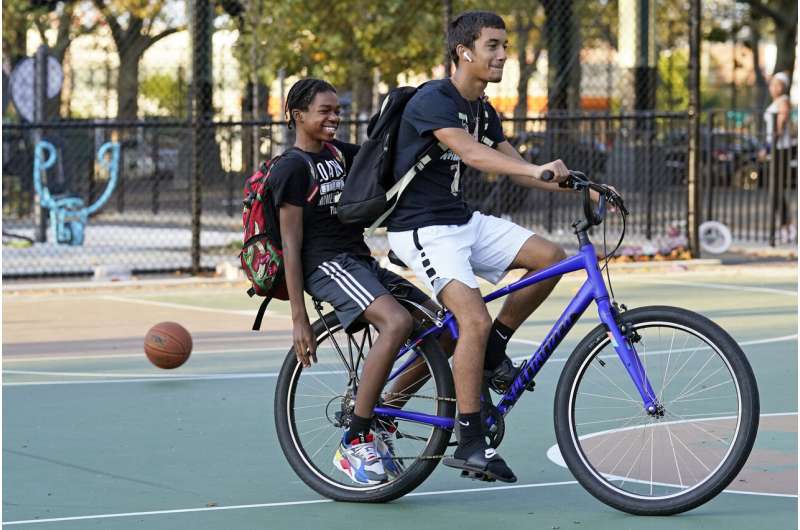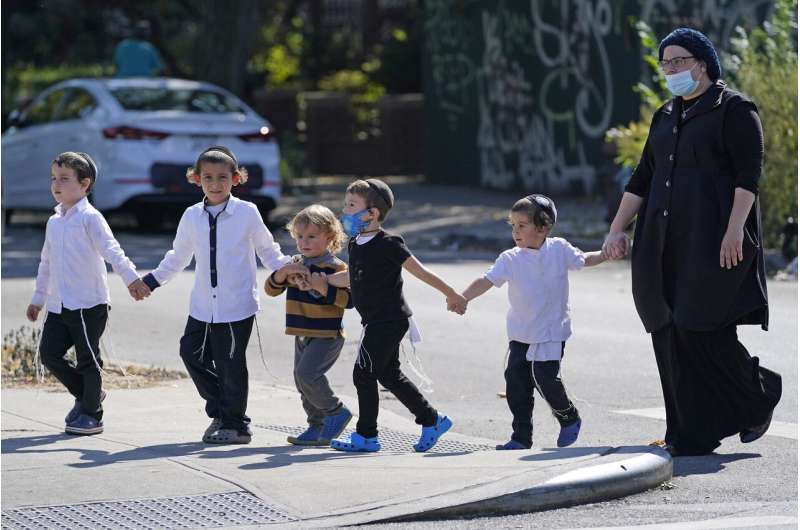In this Sept. 28, 2020 file photo, two boys ride a bicycle on a basketball court at Scarangella Park in the Gravesend section of Brooklyn in New York. As New York state's daily count of new coronavirus cases continues on an upward trend, one of the hotspots in the state included the New York City borough of Brooklyn, where more than 350 people tested positive on Friday, Oct. 2, 2020. (AP Photo/Kathy Willens, File)
New York state's daily count of new coronavirus cases is continuing on an upward trend.
The state reported on Saturday that there were more than 1,700 new confirmed cases on Friday, up slightly from the day before—case totals not seen in New York since May.
Some of the hotspots in the state included the New York City borough of Brooklyn, where more than 350 people tested positive, and in suburban Rockland County, which saw at least 120 new cases.
New York recorded the results of more than 134,000 virus tests Friday, the most ever performed in a single day.
"This pandemic is not over," Gov. Andrew Cuomo said in a statement. He added: "My message to New Yorkers is please stay vigilant."
The hardest hit regions of the state, on a per capita basis, were the Southern Tier area along the Pennsylvania border and the Mid-Hudson Valley.
Both of those areas were seeing the virus spread at a rate that, if they were independent states, they would be subject to New York's rules requiring out-of-state travelers to quarantine.
The quarantine cutoff, currently for states like Illinois, Colorado and Florida, is based on a seven-day rolling average of positive cases exceeding 10 per 100,000 residents.
In this Sept. 28, 2020, file photo, a woman and a group of young children cross a busy street in the Midwood neighborhood of the Brooklyn borough of New York. As New York state's daily count of new coronavirus cases continues on an upward trend, one of the hotspots in the state included the New York City borough of Brooklyn, where more than 350 people tested positive on Friday, Oct. 2, 2020. (AP Photo/Kathy Willens, File)
The Southern Tier's average Friday was at 17 per 100,000.
An often-cited measure of the virus' spread—the percentage of tests that come back positive—remained low, about 1.3%.
© 2020 The Associated Press. All rights reserved. This material may not be published, broadcast, rewritten or redistributed without permission.
























